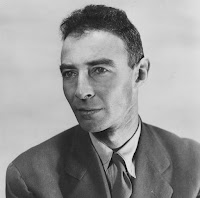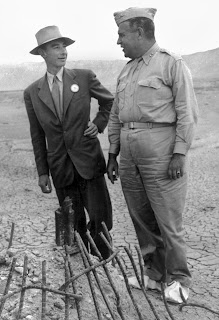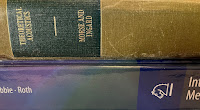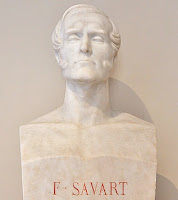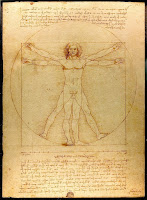 |
| Louis Pasteur (1822–1895) |
 |
| Louis Pasteur, by Patrice Debré. |
I base this study on the biography Louis Pasteur by Patrice Debré (translated from French to English by Elborg Forster). As I read this book, I focused on the key events in Pasteur’s education and early research when he made this transition.
Pasteur began his career as a physical scientist studying at the École normale supérieure in Paris.
For his doctorate, Pasteur had to submit two theses, one in physics and one in chemistry. The physics thesis brought together several studies concerning the use of the polarimeter… Pasteur’s first studies showed, or rather confirmed, that two isomorphic substances rotate polarized light to the same degree.Polarization was a new topic in physics at that time. Étienne-Louis Malus, a fellow Frenchman, discovered the Law of Malus, governing how much light passes through two polarizers, in 1808, just 14 years before Pasteur’s birth. Pasteur’s friend and mentor Jean-Baptiste Biot first showed that polarized light could be rotated when passed through certain crystals. Pasteur’s contribution was to prove that crystals formed from tartaric acid could rotate polarized light either clockwise or counterclockwise, depending on the chirality of the crystal (this acid is asymmetric, having two forms that are mirror images of each other, like the left hand and the right hand). In a famous experiment, he inspected the structure of each crystal under a microscope and determined if it was left or right handed. When he then separated the two types of crystals he could obtain rotation in either direction, although a mixture of the two crystals did not rotate light. This discovery, made in 1848, at first appears to arise from physics and chemistry alone, but its relation to biology is that most biological molecules exist in only one version. Handedness matters in biology. Debré writes
In discovering the principles of molecular asymmetry, Pasteur had done nothing less than to forge a key—and this key has unlocked the door to the whole of modern biology… When Pasteur considered asymmetry on a cosmic scale, he went beyond the confines of physics and chemistry to confront the fundamental questions about life.
At the beginning of the academic year 1856, an industrialist of Lille, M. Bigo, whose son Emile was taking Pasteur’s course at the Faculty of Sciences, came to see him. Many manufacturers of beet root alcohol, he said, were having problems with their production…
The findings Pasteur presented to the Academy of Sciences of Lille, and subsequently that of Paris, seemed very different from the studies he had undertaken previously. He was known as a specialist on crystals, and now he had become a theoretician of fermentation. Ranging from polarized planes of light to culture media, his reagents had little in common. Yet the preoccupations that guided Pasteur’s thinking at that period were not really different from those that had haunted him for a long time: he wanted to understand the relationship between life and molecular asymmetry.The idea that a living microscopic organism was responsible for fermentation was one of Pasteur’s key insights. In fact, there were two types of yeast involved in beet root fermentation. The desirable one produced alcohol. The undesirable one, that led to all the problems, produced lactic acid. Debré concludes
A few years after the request of industrialist Bigo, Pasteur had thus established beyond a doubt that the lactic acid in the vats in the rue d’Esquermes came from an unfortunate contamination with this yeast. He even suggested the means to get rid of this contamination… Pasteur’s research on fermentation created microbiology.Pasteur’s work on fermentation led to the related question of spontaneous generation. Many scientists at the time thought that living organisms could spontaneously arise in dead and decaying tissue, but Pasteur showed that such decay was always due to germs that entered the tissue from the air.
Pasteur’s transition to biology became complete after Jean-Baptiste Dumas asked him to investigate a disease that was destroying the silkworm industry in France. To address this issue, he needed to learn more biology.
Pasteur came from crystals. Owing to his scant knowledge of animal biology, he was somewhat apprehensive about experiments on animals. As soon as he accepted Dumas’s assignment, he therefore went, along with his assistant Emile Duclaux, to the physiology course taught by Claude Bernard at the Sorbonne. There he took notes and humbly relived his years of training in the halls of the university. But he found it difficult to learn a whole new field; and indeed, since he had neither the time nor the patience to do this, he soon preferred to form his own ideas on the problem at hand.Once again, Pasteur was successful in addressing a biological problem; this time bacteria infecting silkworms (they are not really a worm, but a caterpillar).
The caterpillar of Alés led Pasteur from microbiology to veterinary science to medicine… When Pasteur revolutionized the science of his era by discovering the germs and their role, it was only natural that he should become interested in medicine and hygiene.At this point, Pasteur had essentially completed his transition from physics to biology and medicine. I won’t discuss his later work on the use of antiseptics in surgery, pasteurization, anthrax infection in sheep, or the development of a rabies vaccine. Debré summarizes,
In his last studies, Pasteur recalled that he had started out as a chemist. First in the laboratory of the rue d’Ulm and then in his Institute, his ultimate experiments indicate that he was trying to understand how the same microbe can either kill a person or stimulate his or her resistance. This is where bacteriology merged into immunology. Pasteur brought these neighboring disciplines together. Understanding the role of the molecules, the toxins, and the antitoxins involved both chemistry and biology.So what do I conclude about Pasteur’s transition from the physical to the biological sciences? It wasn’t part of a long-range plan. Nor was it primarily motivated by the desire to help the sick, at least initially. I see two key points. First, the rotation of polarized light when passed through an organic substance led him naturally from physics to biology; scientific problems don’t always respect academic boundaries. Second, requests to address industrial problems further accelerated this transition, and those problems happened to be biological in nature. There seems to be a lot of chance involved in this transition (I think there often is for many scientists). But, as Pasteur famously said, chance favors the prepared mind.
https://www.youtube.com/watch?v=1lLNZQVPpQA
